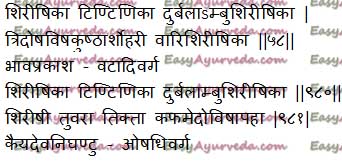Camel Bush (Trichodesma zeylanicum) – Uses, Remedies, Research, Side Effects
Dr Renita D’Souza
Camel bush (Trichodesma zeylanicum) is an Ayurvedic herb used for both medicinal and culinary purposes. All other livestock avoid eating this herb except camels. In Sanskrit it is known as Ambu shirishika.
Read – Shirisha, Albizia lebbeck- Uses, Medicinal Qualities, Ayurveda Details
Table of Contents
Introduction
Young leaves and shoots of camel bush is cooked as a side dish in some places. Therapeutically it is used as a remedy for wounds, fever, poisoning, skin diseases, intestinal worms, pain etc. Leaves acts as analgesic and can be used to relieve pain. Seed oil is used for its emollient property.
Botanical Name – Trichodesma zeylanicum
Synonyms – Borago zeylanica, Pollichia zeylanica, Borraginoides zeylanica
Family – Boraginaceae
Traditional Uses of Jal shirishika
Visha – poisoning, toxic conditions
Kushta – skin diseases
Arsha – piles
Kapha related diseases
Diseases related to fat (meda) tissue like obesity, lipoma etc
Taste (rasa) – astringent (tuvara), Bitter (tiktha)
Effect of Jalshirshaka on Tridosha
It balances all tridoshas Vata, Pitta and Kapha dosha.
Morphology of Trichodesma zeylanicum
Trichodesma zeylanicum is herb growing to a height of 1 meter or more. Leaves opposite, lanceolate to oblanceolate, covered on both surfaces by short and stiff hairs giving a feel of sandpaper on touch. Fruits nutlets, 3-4 mm long. Flowers are blue, occasionally white. Sepals are covered with white appressed hairs on both the inner and outer surfaces.
Traditional Remedies of Camel bush
- Roots and green leaves paste is applied as a poultice and also chewed to treat wounds, boils and snakebites.
- In tuberculosis, stomach-ache, poisoning and rheumatism, roots are chewed or root infusion is used as a remedy.
- Leaves are also used as remedy for fever and scorpion bite.
- Decoction of the leaves is demulcent and possess diuretic properties. Decoction of flowers induces sweating and diuretic.
- Root powder helps in relieving pain when applied to wounds and skin infections.
- Leaves and root infusion is used as a remedy for intestinal worms, coughing, itching and throat pain.
- Plant decoction is used as remedy for fever, dysentery and act as a diuretic.
- Dried leaves powder applied over infected wound help in healing and relieves pain.
- Ash of burnt plant is used as remedy for cough and scabies.
- As a remedy for vaginitis, root decoction is taken orally and used as douche.
- In cataract, leaf infusion is used as eye drops.

Part Used
Leaves, Roots
Sanskrit Synonyms
Shirishika, Tintinika,
Durbala, Ambushirishika
Varishirishaka
Classical Categorisation
Bhavaprakasha Nihantu – Vataadi Varga
Kaiyadeva Nighantu – Aushadi Varga
Interaction with medicines, supplements
Can this be used while taking Homeopathic medicine?
Yes. This product does not react with homeopathic medicine.
Can
this medicine be continued while taking supplements like multivitamin tablets,
Omega 3 fatty acids etc?
Yes. Generally, this product goes well with most
of the dietary supplements. However, if you are taking more than one product
per day, please consult your doctor for an opinion.
With western
medicines
Seek your
doctor’s advice if you are taking this product along with other western
(allopathic / modern) medicines. Some Ayurvedic herbs can interact with modern
medicine.
If both Ayurvedic and allopathic medicines are advised together, then it is
best to take Allopathic medicine first, wait for 30 minutes and then take the
Ayurvedic medicine.
Distribution, chemistry, side effects
Distribution
Trichodesma zeylanicum is found in Africa, Asia and Australia.
Chemical constituents
Trichodesma zeylanicum contains phenolics, alkaloids, saponins, flavonoids and tannins.
Seed contain ricinoleic acid, cyclopropene acid, the pyrrolizidine alkaloids, with low toxic alkaloid supinine.
A study says that pyrrolizidine alkaloids can cause fatal liver conditions and several Trichodesma species are involved in livestock poisoning and not recommended for medicinal use.(A)
Side Effects
No recorded side effects
However, high oral dosage can cause constipation due to its astringent property.
Research
Anti oxidant Activity – A study conducted to evaluate antioxidant potential and free scavenging activity of Trichodesma zeylanicum powdered root extract have proved that Trichodesma zeylanicum is a potential source of antioxidants relevant to wound treatment.
Names in different Languages
Hindi Name – Dhadhona, Hetemuria, Jalasirasa
English Name – Camel Bush, Cattle Bush, Northern blue bell
Kannada Name – Ethina naalige gida, gaaya maari
Marathi Name – Jalashirasi
Tamil Name – Kalutaikkali
Telugu Name – Pedda gurragutti
Scientific Classification
Kingdom – Plantae
Class – Angiosperms
Order – Boraginales
Family – Boraginaceae
Genus – Trichodesma
Species – T. zeylanicum
Click to Consult Dr Renita D’Souza










